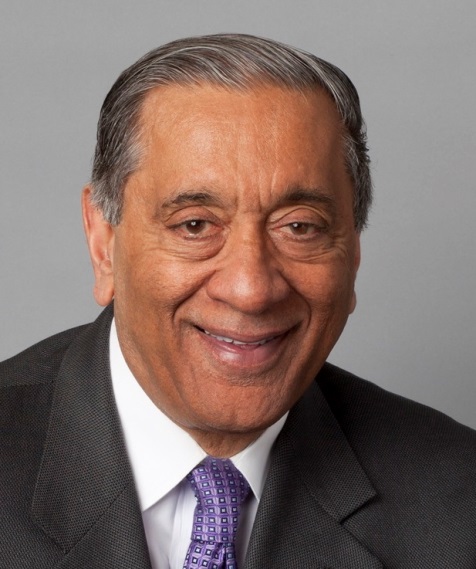DESIBUZZCanada
Events Listings
Dummy Post

International Day Of Yoga To Be Virtually Celebrated Saturday At 4pm

CANCELLED: Coronavirus Fears Kills Surrey’s Vaisakhi Day Parade

ADVERTISE WITH US: DESIBUZZCanada Is The Most Read South Asian Publication Online

SURREY LIBRARIES: Get Technology Help At Surrey Libraries

WALLY OPPAL: Surrey Police Transition Update On Feb. 26

GONE ARE THE DAYS - Feature Documentary Trailer

Technology Help At Surrey Libraries

Birding Walks

Plea Poetry/short Story : Youth Contest

International Folk Dancing Drop-in Sessions
PM Trudeau Finally Reversing His Ill-Advised Rampant Immigration With Drastic Reductions
- November 2, 2024

Prime Minister Justin Trudeau is finally reversing his ill-advised rampant immigration policies and recently announced drastic reductions starting almost immediately. Trudeau’s policies, especially the student and temporary worker categories have flooded Canada with wanna-be immigrants, especially from India, some of whom have turned out to be criminals sent by India’s government agencies to target Sikhs and Indo-Canadian businessmen for extortion rackets, have been one of the top reasons his and his party’s popularity has nosedived. It is the reason his government announced massive reductions in immigration going forward. Immigration Minister Marc Miller announced last week the 2025–2027 Immigration Levels Plan: a plan that will pause population growth in the short term to achieve well-managed, sustainable growth in the long term. For the first time ever, the levels plan includes controlled targets for temporary residents, specifically international students and foreign workers, as well as for permanent residents.
By PD Raj – Senior Reporter DESIBUZZCanada
OTTAWA — Prime Minister Justin Trudeau is finally reversing his ill-advised rampant immigration policies and recently announced drastic reductions starting almost immediately.
Trudeau’s policies, especially the student and temporary worker categories have flooded Canada with wanna-be immigrants, especially from India, some of whom have turned out to be criminals sent by India’s government agencies to target Sikhs and Indo-Canadian businessmen for extortion rackets, have been one of the top reasons his and his party’s popularity has nosedived. It is the reason his government announced massive reductions in immigration going forward.

Immigration Minister Marc Miller announced last week the 2025–2027 Immigration Levels Plan: a plan that will pause population growth in the short term to achieve well-managed, sustainable growth in the long term. For the first time ever, the levels plan includes controlled targets for temporary residents, specifically international students and foreign workers, as well as for permanent residents.
Miller said immigration is essential to our country’s economic success and growth, stressing that when Canada reopened following the pandemic, the needs of businesses were greater than the supply of workers available to support their recovery. We took decisive measures to attract some of the world’s best and brightest to study and work in Canada, and to integrate them into the economy quickly. This meant a faster economic recovery. It also meant that robust immigration helped prevent a recession, while contributing to Canada’s workforce.

“Today’s announcement is the next step in our plan to address the evolving immigration needs of our country. While it’s clear our economy needs newcomers, we see the pressures facing our country, and we must adapt our policies accordingly. These changes will make immigration work for our country so that everyone has access to the quality jobs, homes and supports they need to thrive. We have listened to Canadians, and we will continue to protect the integrity of our system and grow our population responsibly,” Miller said.
Opposition leader Pierre Poilievre called the Liberal government’s reversal on immigrations policies as a flip flop.
“Today's immigration flip flop is a massive admission of failure by Justin Trudeau, an admission that he's not worth the cost or the corruption. With his own MPs working to throw him out, and less than a year from the carbon tax election, Trudeau has suddenly admitted that radical uncontrolled immigration, and policies related to it, are partly to blame for joblessness, housing, and healthcare crises. In fact, let's remember after nine years of Trudeau, we have one in ten Torontonians lined up at food banks. We have 1400 homeless encampments across the province of Ontario. Two million Canadians have to go to a food bank every month. Scurvy is making a comeback. We have the worst economy in the G7. Everything is broken, and his Immigration Minister admits that immigration is ‘out of control’ after nine years of liberal policies,” Poilievre said.
In response to Trudeau’s failures, Poilievre outlined his plan to fix the country’s immigration system.
“Common sense Conservatives will fix what Trudeau and the NDP-Liberals broke. We will restore the best immigration system in the world. We will stop the illegal arrival of false refugee claimants by securing our borders, our ports, and our airports. We will end the abuse in the temporary foreign worker program, the international student program, and the refugee program. We will cap population growth so that it is always below the growth in housing, healthcare, and jobs.”

The 2025–2027 Immigration Levels Plan is expected to result in a marginal population decline of 0.2% in both 2025 and 2026 before returning to a population growth of 0.8% in 2027. These forecasts account for today’s announcement of reduced targets across multiple immigration streams over the next two years, as well as expected temporary resident outflows resulting from the 5% target, natural population loss and other factors.
With this year’s levels plan, Miller said his government has listened to Canadians. We are reducing our permanent resident targets. Compared to last year’s plan, we are:
*reducing from 500,000 permanent residents to 395,000 in 2025
*reducing from 500,000 permanent residents to 380,000 in 2026
*setting a target of 365,000 permanent residents in 2027
The Levels Plan also supports efforts to reduce temporary resident volumes to 5% of Canada’s population by the end of 2026. Given temporary resident reduction measures announced in September and this past year, Canada’s temporary population will decrease over the next few years as significantly more temporary residents will transition to being permanent residents or leave Canada compared to new ones arriving. Specifically, compared to each previous year, we will see Canada’s temporary population decline by
*445,901 in 2025
*445,662 in 2026
*a modest increase of 17,439 in 2027
These reductions are the result of a series of changes over the past year, including a cap on international students and tightened eligibility requirements for temporary foreign workers, implemented to decrease volumes and strengthen the integrity and quality of our temporary resident programs. The changes are designed with long-term economic goals in mind to make sure that we continue to attract the best and the brightest.
These changes will help provinces, territories and stakeholders align their capacities and allow the population to grow at a sustainable pace as we encourage institutions to do their part in better welcoming newcomers.
Other measures from the 2025–-2027 Immigration Levels Plan include the following:
Transitioning more temporary residents who are already in Canada as students and workers to permanent residents
Representing more than 40% of overall permanent resident admissions in 2025, these residents are skilled, educated and integrated into Canadian society. They will continue to support the workforce and economy without placing additional demands on our social services because they are already established, with housing and employment.
Focusing on long-term economic growth and key labour market sectors, such as health and trades
Permanent resident admissions in the economic class will reach 61.7% of total admissions by 2027.
Strengthening Francophone communities outside Quebec and supporting their economic prosperity
Of the overall permanent resident admission targets, Francophone immigration will represent
*8.5% in 2025
*9.5% in 2026
*10% in 2027
Through this plan, the government is using our existing programs so that everyone—including newcomers—has access to the well-paying jobs, affordable homes and social services they need to thrive in our beautiful country.
Quick facts:
Canada’s population has grown in recent years, reaching 41 million in April 2024. Immigration accounted for almost 98% of this growth in 2023, 60% of which can be attributed to temporary residents.
This plan to right-size population growth after the post-pandemic surge will support continued robust GDP growth and enable GDP per capita growth to accelerate throughout 2025 to 2027, as well as improve housing affordability and lower the unemployment rate.
Reducing the volume of immigrants will help to alleviate some pressure in the housing market, with the housing supply gap expected to decrease by approximately 670 000 units by the end of 2027.
The temporary resident targets in the levels plan do not include short-term visitors or seasonal workers, who are not captured in annual population estimates. Targets are for the number of net new temporary residents entering Canada each year.
The Government of Canada has put in place measures to manage the volume of temporary resident arrivals, uphold the integrity of our immigration system and protect vulnerable people, including
*reforming the International Student Program
*tightening eligibility requirements for
*temporary foreign workers
*post-graduation work permits
*work permits for spouses of international students and temporary foreign workers
According to Statistics Canada, immigrants are making important contributions across every sector of Canada's economy—namely, health care, construction and transportation. When it comes to Canada's residential construction sector, immigrants play a key role, accounting for 23% of all general contractors and residential builders.

















